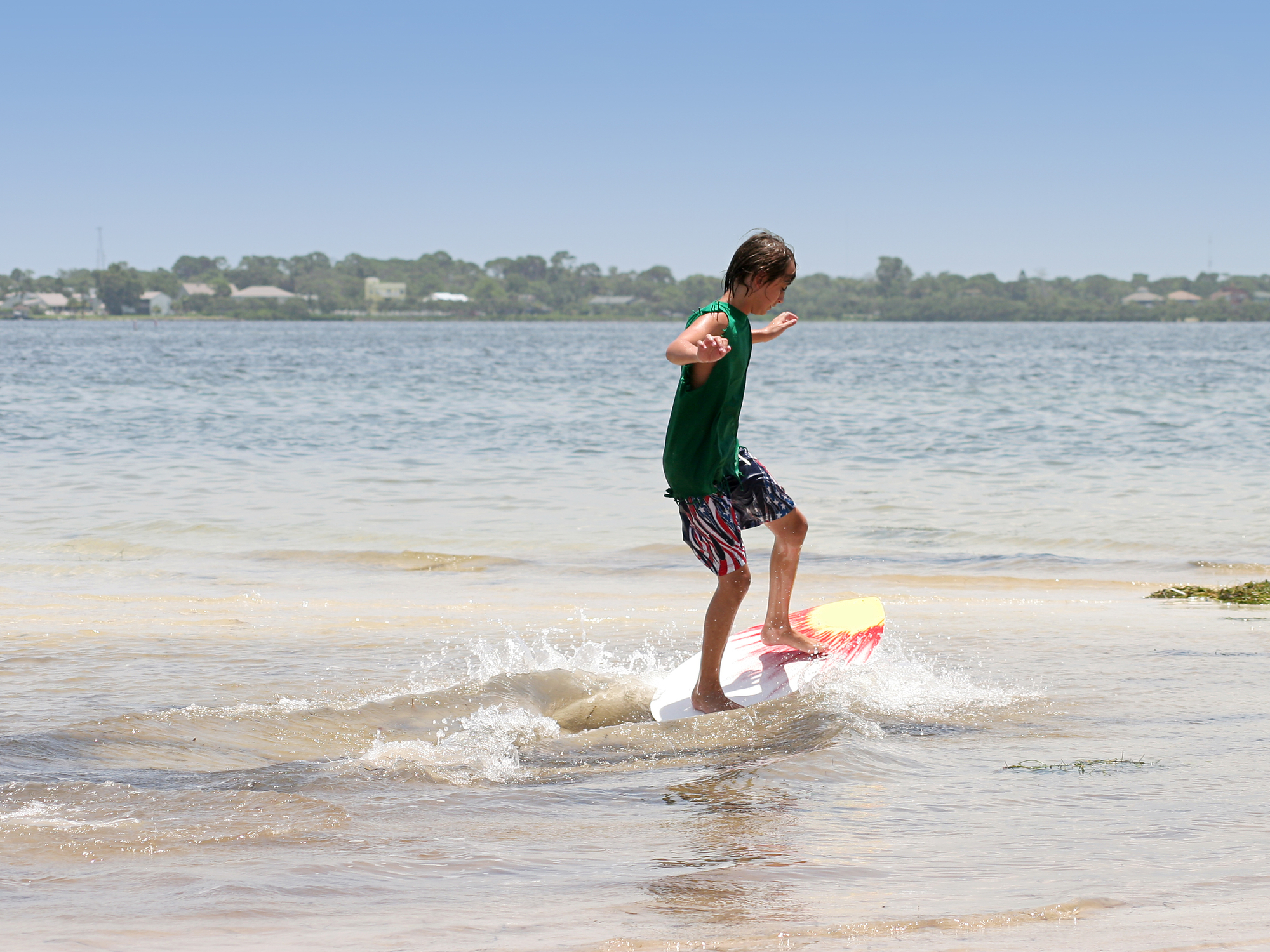Invented in Laguna Beach during the 1920s, skimboarding has since become one of the most popular water sports in the world.
It combines the elements of skateboarding and surfing, and millions of beachgoers enjoy zipping along the shore on their boards.
Aside from the thrill and excitement that skimboarding offers, there are several other reasons why skimboarding is so popular.
First, it is the only board sport that is not dependent on water and wind conditions. Second, you can skimboard on most beaches!
Finally, its low-skill requirement allows more people to master the sport quickly.
But what does learning how to skimboard need, and can you learn it in a weekend?
Let’s find out!
How to Choose a Skimboard
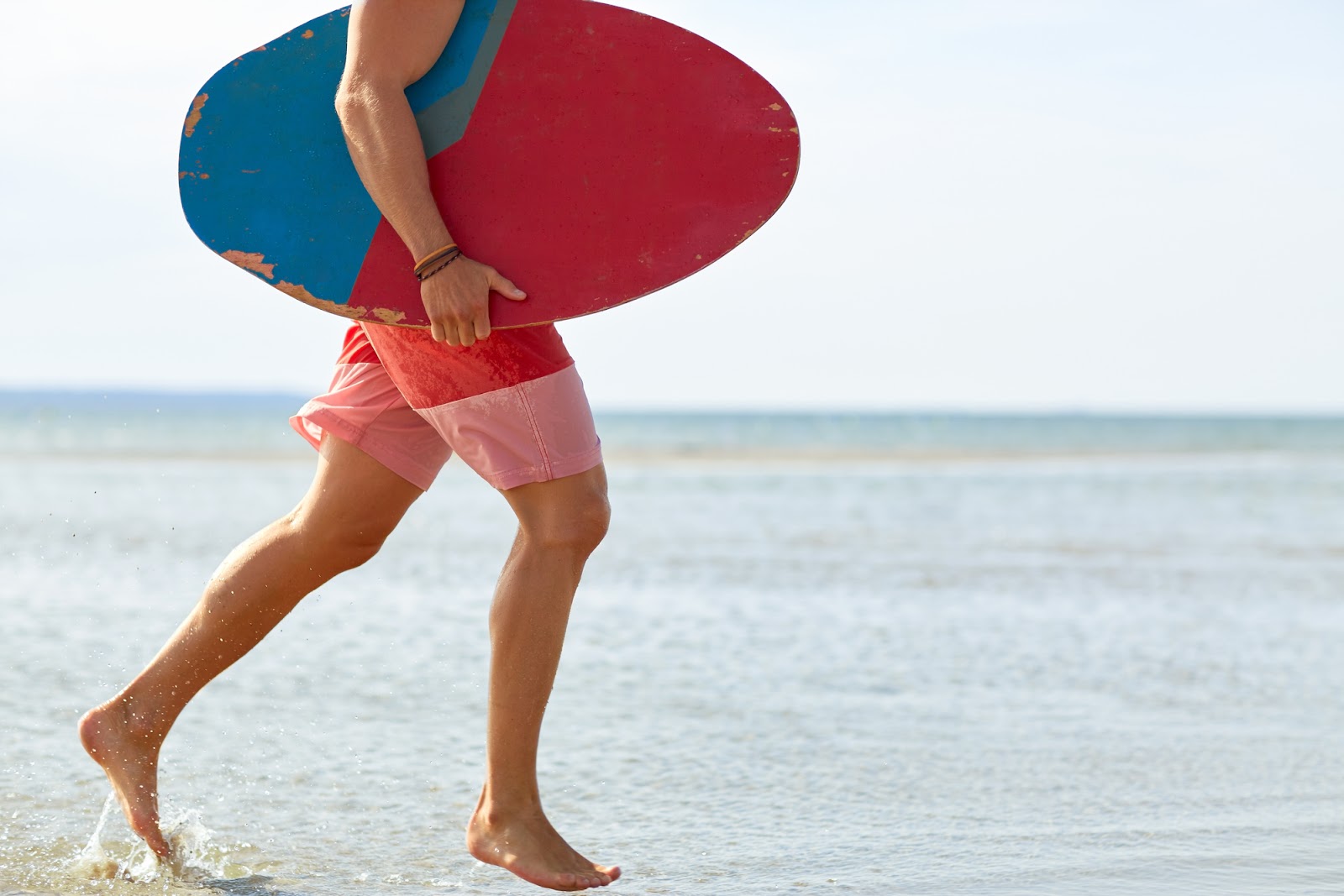
Before you can hit the shore and skimboard, the first thing that you need to do is find a suitable board.
At first glance, a skimboard and a surfboard look quite similar. However, a skimboard is about half the length and thickness of a surfboard.
What’s more, skimboards are narrower and they do not have a fin.
Skimboards come in a range of prices and qualities. Just like surfboards, high-end skimboards are made from carbon fiber and can cost a pretty penny.
Unless you’re looking to go pro, you’re better off with an entry-level board.
Entry-level boards are typically made from wood or foam. Wood boards are cheaper and more stable, but they are heavier and only suitable for skimming along flat surfaces.
Foam boards, on the other hand, are more durable and buoyant. While they are a bit more expensive, they can also be used for catching waves along the shoreline.
Most foam boards also have a traction pad to give you a better grip while skimming.
Whichever type of board you choose, you should also get board wax to protect the surface of your board and make your ride smoother.
Riding Your Skimboard in 5 Easy Steps
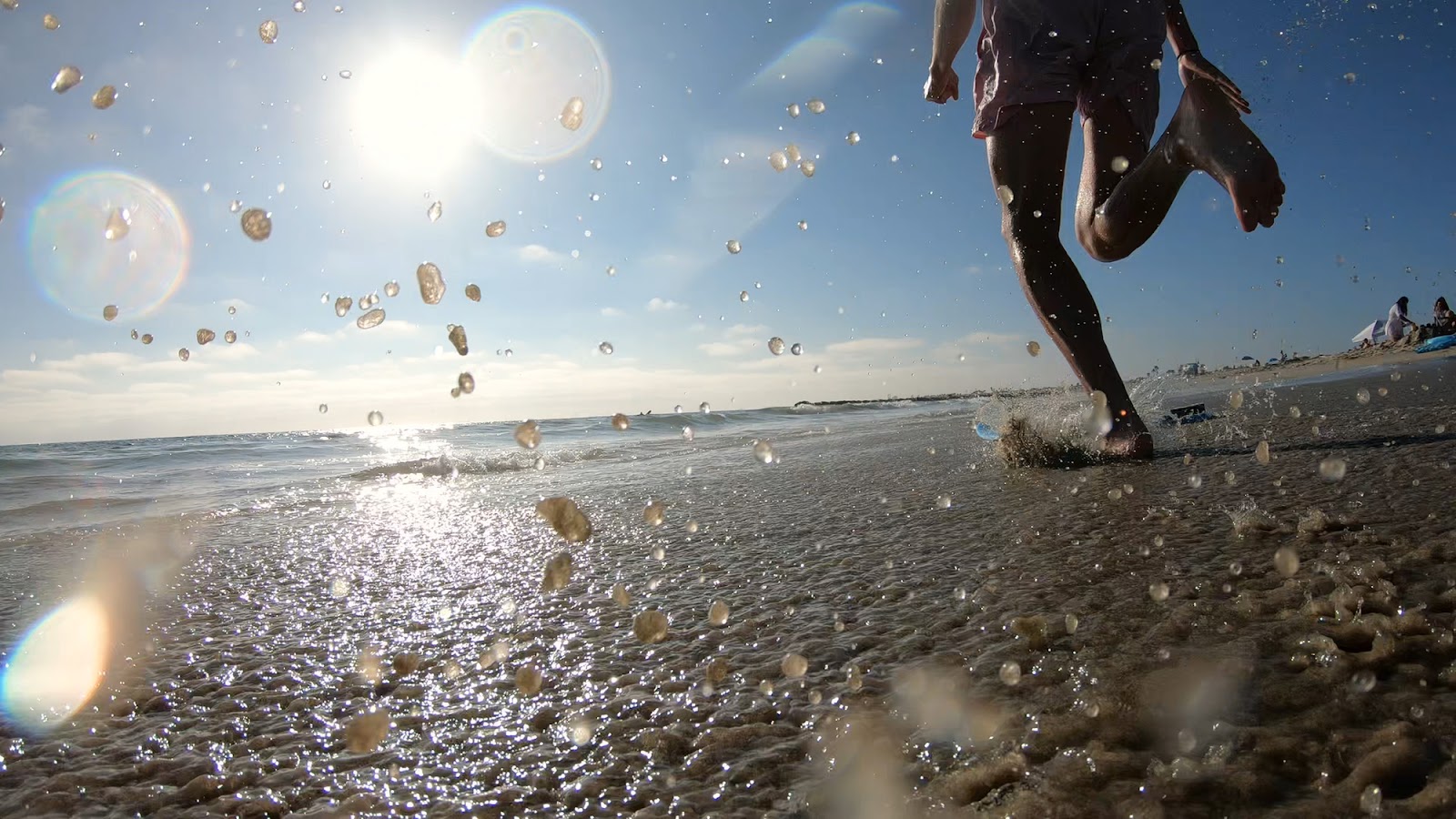
After choosing your board, it’s time to hit the shore! For beginners, the best surface is a smooth and flat sand shore. Here are five steps to follow:
Step 1: Choose the right surface - sand quality and texture can make all the difference for your first ride. The sand must be loose and smooth, with around ¼ “ of water on top. Avoid beaches with rocky, sticky, or mushy sand.
It is also best to choose a beach with a sloping surface to make it easier for you to gain speed.
Step 2: Run quickly - faster runs mean a longer ride. Find a long stretch of unobstructed beach to gain momentum without stopping.
Position your body behind your board as you hit your top speed.
Step 3: Drop the board - as you run, hold on to the board with one hand on each end. Drop the board flat on the surface once you reach the shore break (the point where the water meets the sand).
Step 4: Ride - immediately step lightly upon the board while keeping your momentum up. Place your dominant foot on the back of the board and your non-dominant foot in the middle. Maintain your center of balance in the middle of the board as much as possible.
Step 5: Complete the slide - adjust your body with the forward movement of the board. Just like with surfboarding, use the back of the board to control direction and speed. Allow the board to come to a stop completely before hopping off.
Skimboarding Tips and Tricks
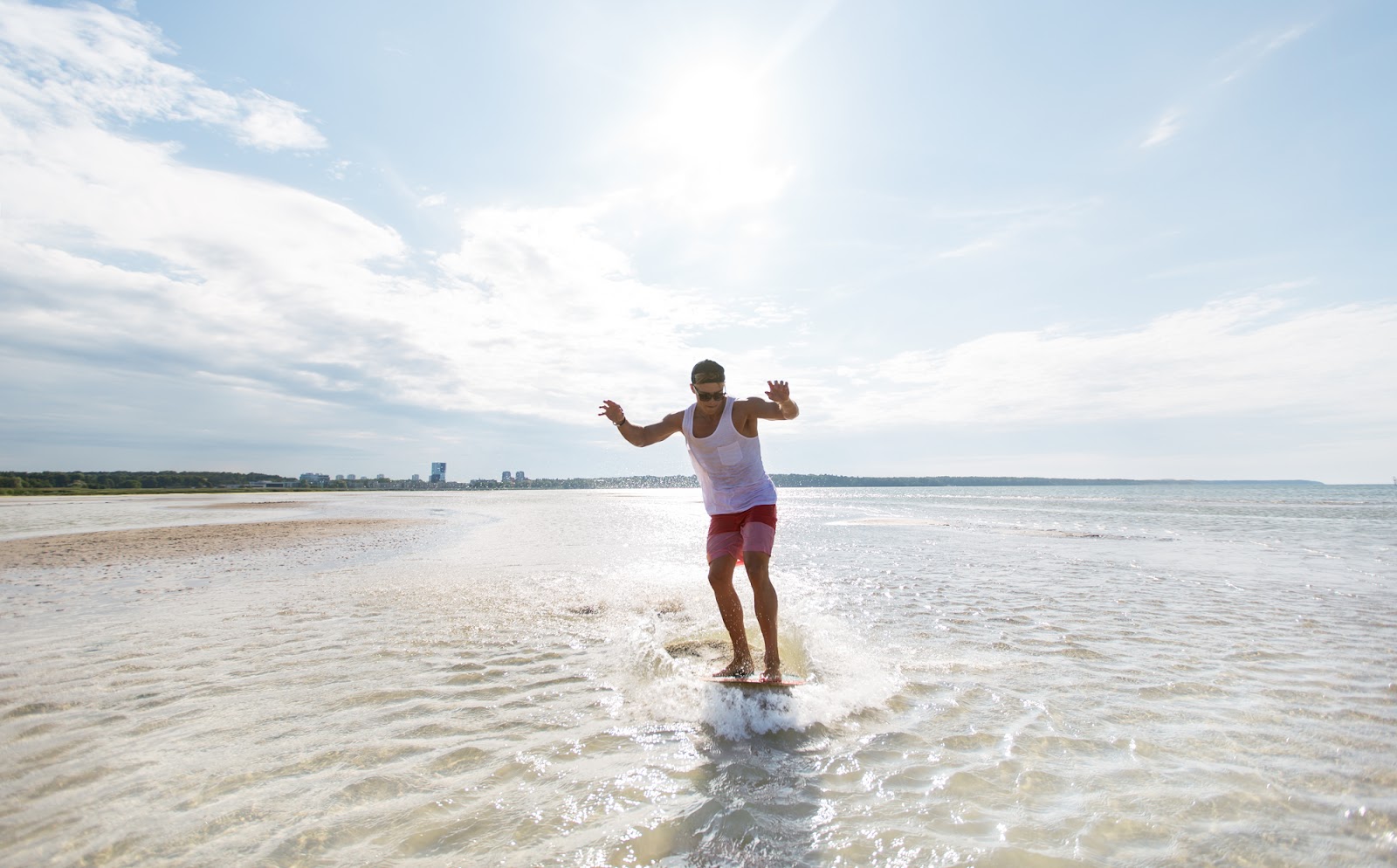
Learning how to skimboard takes time and practice. Here are some handy tips and tricks to help you perfect your technique:
Use Grass to Practice
Wet grass is a good alternative if you can’t hit a suitable beach surface. Just make sure to apply wax on your board before each slide.
Avoid muddy or rocky surfaces since they can scratch your board and throw you off balance.
Safety First
Beginners should wear safety gear before going skimboarding. Helmets are a must, since you’ll probably fall quite a bit while learning how to skimboard.
You should also practice falling on your butt as much as possible. Look for Youtube videos on how to fall safely off your skimboard.
Keep it Low
Practice keeping a low stance while on your skimboard. A low stance gives you better balance and keeps your center of gravity in the middle of your body.
It’s also easier to direct your board when your knees are bent.
Should You Enroll in Skimboarding Lessons?
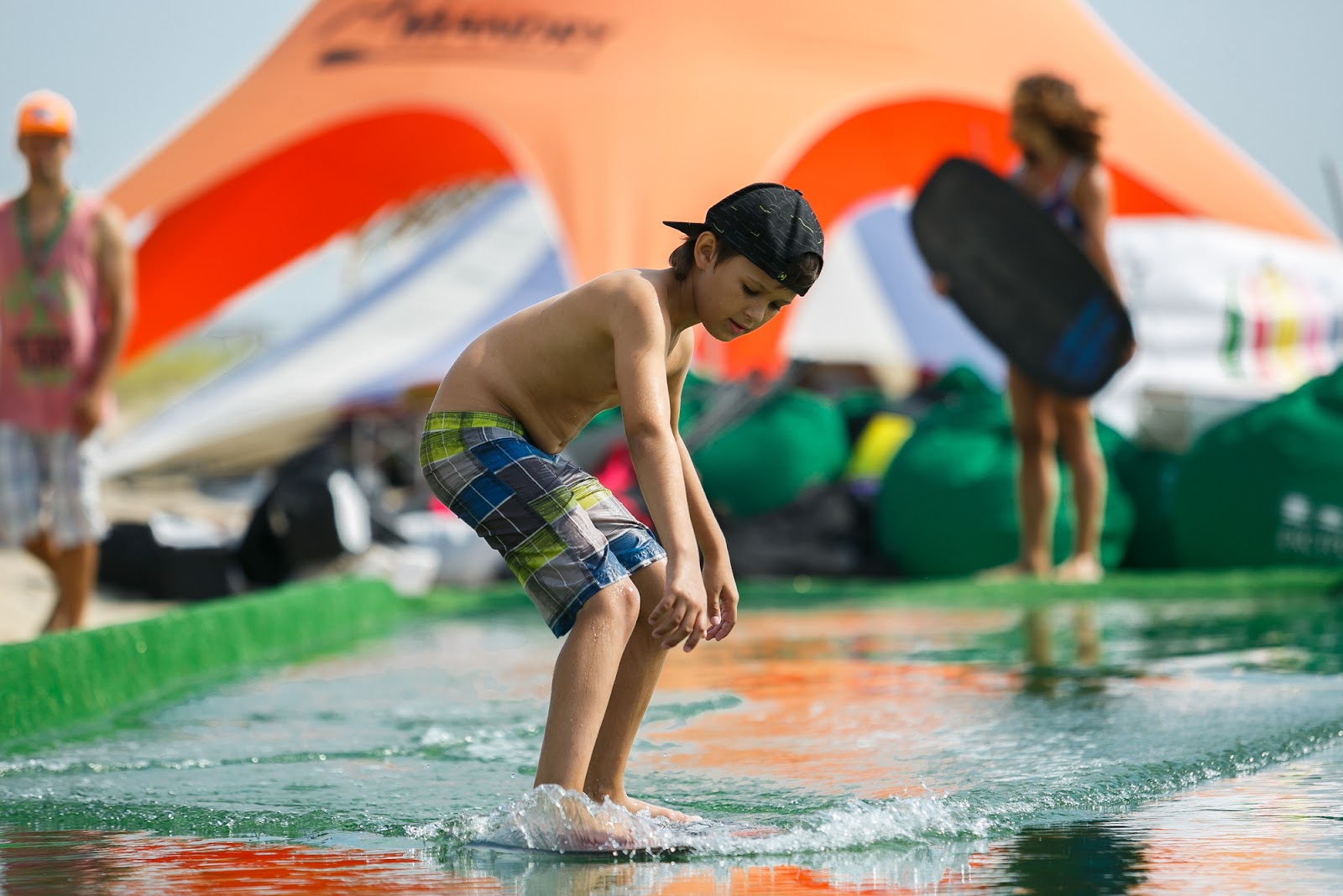
Skimboarding, like any sport, takes time and practice to master.
However, with the proper guidance from experienced instructors, you can quickly learn the basics and progress to more advanced techniques.
Whether you're a beginner or an experienced rider, skimboarding lessons can help you improve your skills and enjoy the sport even more.
You can find skimboarding schools on most beaches that allow board sports.
Private lessons cost anywhere from $100-$125 per lesson, so it would be better to take group classes if you want to save some money.
A lesson takes around 1-2 hours, and you can learn the basics of skimboarding in a single class.
Is Skimboarding Hard?
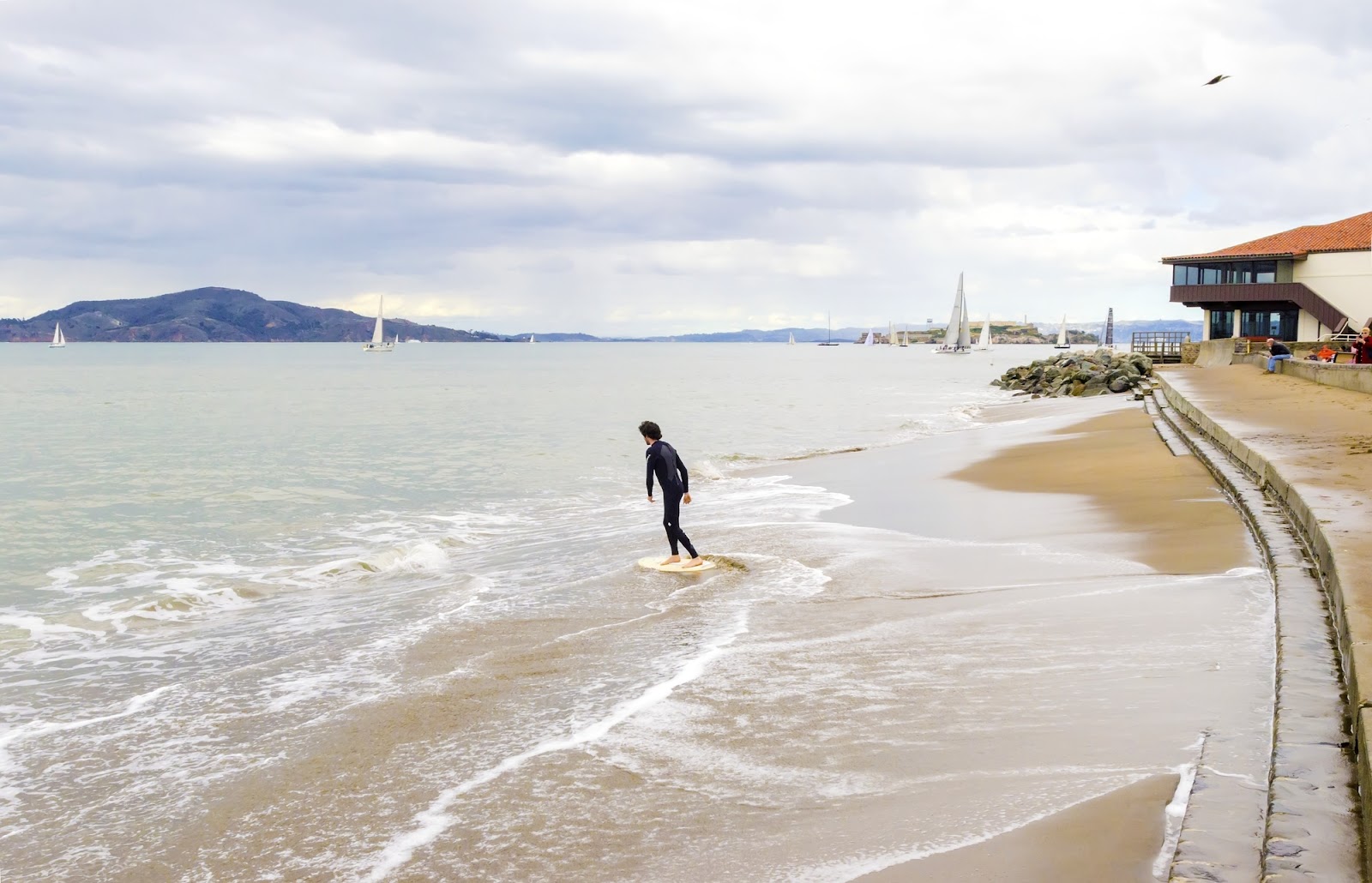
So, is learning to skimboard hard?
Ultimately, it all depends on your perseverance.
Learning the basics can only take one lesson, but putting them into practice is another matter.
You should be prepared to fall repeatedly, at least. It’s all a matter of getting back up and trying again.
If you want to move on to more advanced skimboarding, you also need to learn how to read water and shore conditions.
Are the waves the right size and intensity for tricks?
Almost anyone can learn how to skimboard on a flat and smooth surface. However, the only way to progress to more advanced moves is through regular practice.
Conclusion
Like any other board sport, learning how to skimboard is a matter of dedication. While you can learn the basics with just one class, mastering the technique takes practice.
Once you’ve mastered the fundamentals of skimboarding, you can move on to advanced moves.
Since skimboarding is similar to skateboarding, tricks like flips, kicks, and ollies are possible.
There is nothing more satisfying than mastering your skimboard and seeing how far you’ve come.
Now break out your board and have fun skimming the shore!

